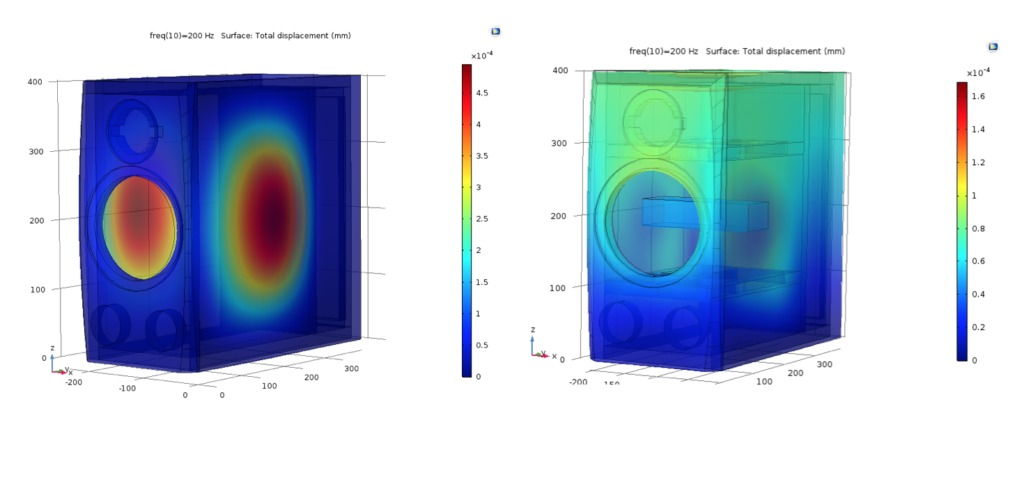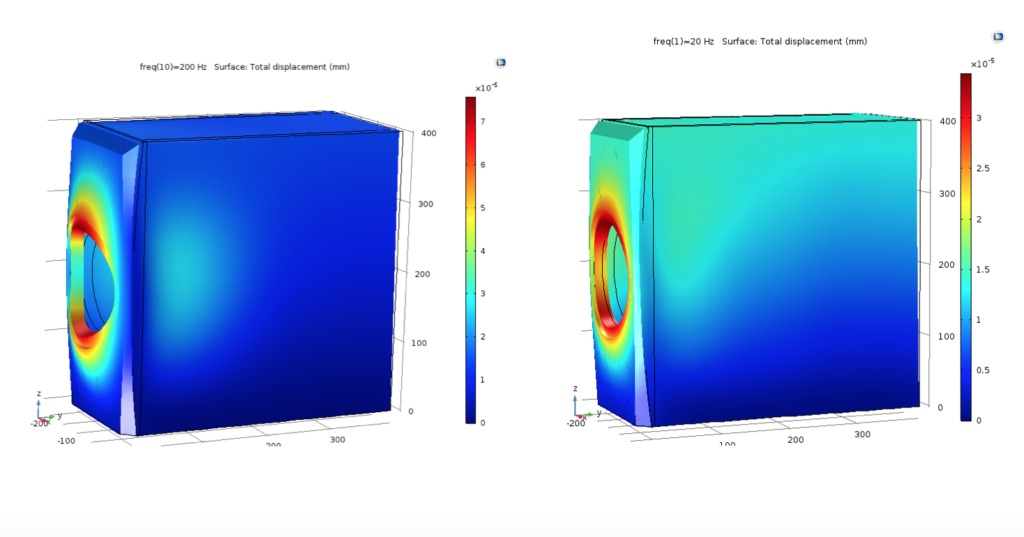Here we would like to underline the importance of designing and building the highest quality cabinets for our speakers. By examining the renderings from our FEA Comsol Multiphysics cabinet study, we can see the improvements that have been achieved, guaranteeing quality and performance every time.

For a speaker to be considered a reference, it must be as accurate as possible. We can clearly see from the image what is happening to our un-braced cabinet (Left) at 200Hz we have pressure in the box that starts to push the side walls outwards, the surface displacement is large in relation to the main LF driver. Adding a false colouration that some Hi-Fi manufacturers have even been know to exploit, but it is not accurate. To some, it might give a sense of extra weight or warmth in the bottom end, but it is an artefact that the cabinet is adding to the musical input signal. We think the result is more of a bloated bass that masks definition. We can clearly see the difference using significant bracing brings (Right) leading to a more defined, tighter and accurate bottom end.
At OS Acoustics our cabinets are veneered on the inside as well as the outside, this type of sandwich construction helps to damp unwanted resonances even further.
All our cabinets are finished using sustainable veneer and certified by the Forest Stewardship Council (FSC)
Please contact us for custom veneer and colour options.

The other force that is trying to work against us is vibration. The LF driver exerts a certain amount of vibration on the front baffle. Vibration distortion can mask the delicate information the tweeter is trying to convey. One way to try and counteract this is to make the baffle extra thick. As well as left to right bracing we also use front to back braces that work in several useful ways. They pin the LF driver firmly in position, couple the front of the cabinet to the back of the cabinet, essentially doubling our baffle thickness and are cut in a way that helps disperse standing waves. All this bracing adds significant weight to the speaker, making it incredibly rigid at the same time, which is precisely what is required for the best possible performance and a clean bass response that is articulate, well defined and fast.
